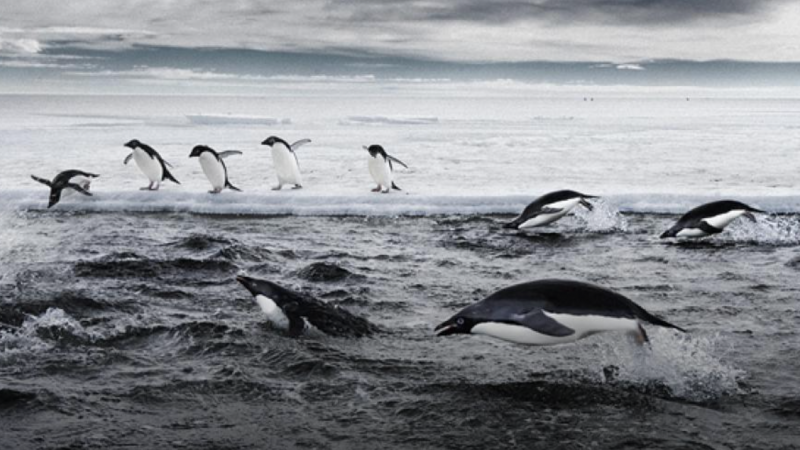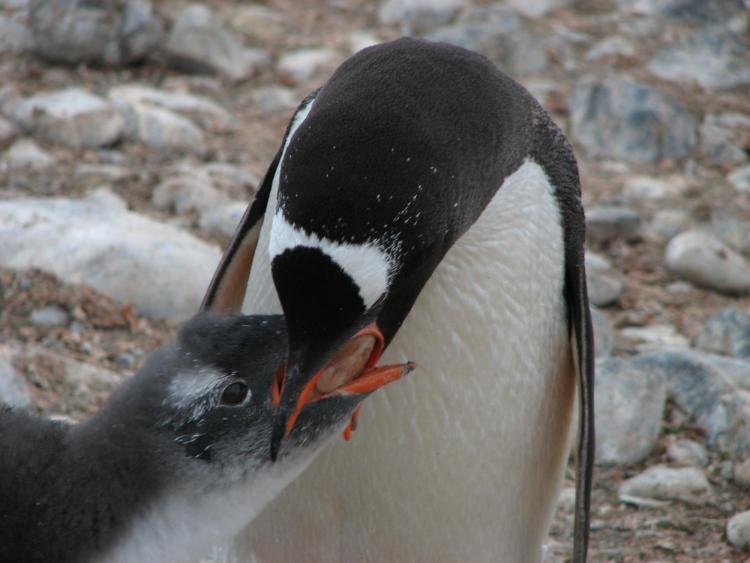
Little shrimplike krill lie at the base of the food web in the Southern Ocean. Many sea creatures in this ocean surrounding Antarctica eat krill. That includes penguins, seals, fish and whales. But krill populations are projected to decline about 30% this century, due to human-driven climate change. And natural climate variability in climate will also play a role. On June 15, 2021, scientists released a new study, the first of its kind, that tries to tease apart the effects of natural climate variation from human-caused climate change with respect to the effects on krill. One result, according to these scientists: it’ll be hard to tell the difference between natural and human-caused effects on krill until late in the 21st century. These scientists’ statement explained:
This study is … the first of its kind to use a group of climate models to demonstrate that climate change has the potential to dramatically alter Antarctic marine ecosystems, but that natural climate variability can obscure human-driven trends.
The peer-reviewed journal Frontiers in Marine Science published this new study on June 15, 2021.

Why are krill important?
Krill are tiny sea animals, only about 2 1/2 inches (6 cm) long. They’re known for swimming together in massive groups. They’re a primary food source for, for example, baleen whales (as you may recall from the 2003 animated feature Finding Nemo, a blue whale, a type of baleen whale, appeared in the story). Many other sea creatures eat krill, too. And many sea animals feed on the creatures that eat the krill. Zephyr Sylvester of the University of Colorado Boulder and lead author of the study said:
Krill are what links the ecosystem together. They’re really important to the Southern Ocean for pretty much every predator species.
But that’s not the only reason krill are important. They’re also a key species for the largest commercial fishery in the Southern Ocean. This fishery encompasses the booming $2 billion fish oil industry, sold as omega-3 supplements in retail giants like Costco.
Krill are one of the most abundant species on Earth. According to these scientists, their total biomass is estimated at 300 to 500 million tons. But, these scientists said:
Krill can only survive in a narrow temperature range and are strongly affected by variables in their underwater environment.
And Antarctica, and the Southern Ocean surrounding it, are among the most sensitive areas in the world to climate change.
Why study natural and human-caused climate change?
These scientists explained that krill are managed via the Antarctic Treaty System. They said:
Currently, fishing in the Southern Ocean is managed by the Convention on the Conservation of Antarctic Marine Living Resources, known as CCAMLR (pronounced ‘cam-ah-lar’). It’s an international body established as part of the Antarctic Treaty System.
The first item on their agenda? Krill.
Yet 40 years after their founding, their catch limits on this creature are still only set using a stock assessment that does not account for natural environmental variability or climate change impacts.
Preserving krill populations means setting harvesting limits. And setting those limits requires knowledge of how future climate will affect krill. Science offers tools for creating future scenarios for krill, and these scientists hope those who manage krill in the Southern Ocean will take those scenarios into account. In this study, the researchers ran many computer models. They said it was the first time scientists had looked at Southern Ocean krill in such detail. Cassandra Brooks of the University of Colorado Boulder and co-author of the study said:
The thing that we really have to understand is: Is there enough krill to feed everything that needs to eat it in the Southern Ocean, as well as humans? My hope is that we can take this as a first step to understanding how to manage krill better.

Bottom line: A new study confirms that krill populations will decline throughout this century. It shows that both human-driven climate change and natural variability will play a role. The study’s authors hope those who manage krill harvests in the Southern Ocean will use their work as an information source.
Source: Detecting Climate Signals in Southern Ocean Krill Growth Habitat











